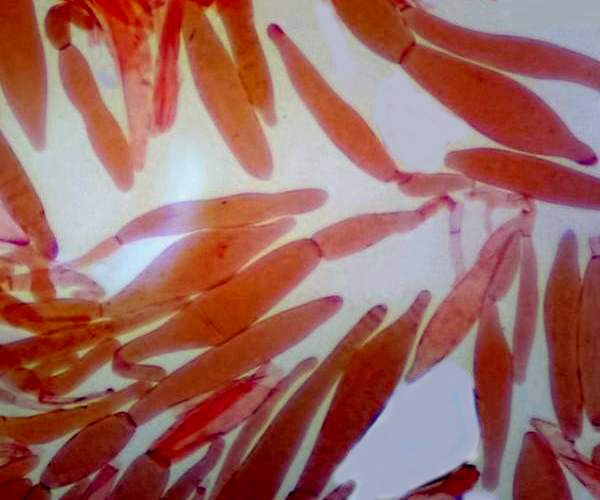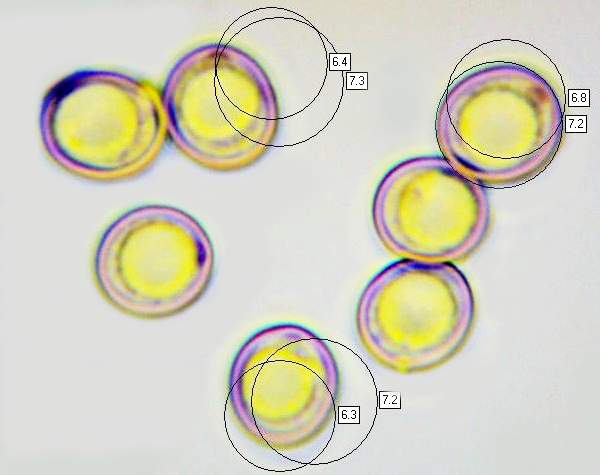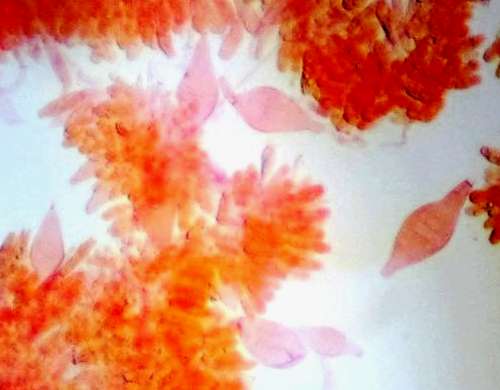Pluteus ephebeus (Fr.) Gillet - Sooty Shield
Phylum: Basidiomycota - Class: Agaricomycetes - Order: Agaricales - Family: Pluteaceae
Distribution - Taxonomic History - Etymology - Identification - Culinary Notes - Reference Sources
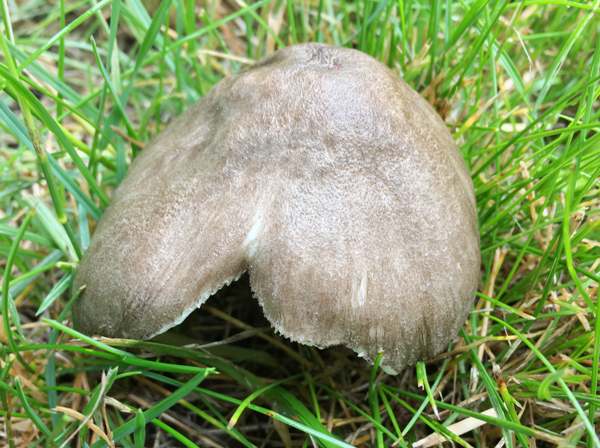
Pluteus ephebeus, the Sooty Shield, has caused much confusion over the years, and several similar shield mushrooms once considered to be separate 'species' are currently being treated by many authorities as cospecific pending clarification by DNA sequencing.
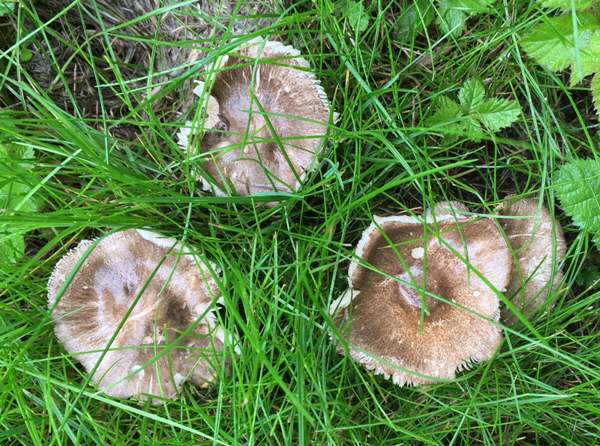
When, as happens occasionally (see above), its caps are light brown, the Sooty Shield can easily be mistaken for a Deer Shield Pluteus cervinus; however, microscopic study immediately separates these lookalikes, because the Deer Shield has horned cystidia and a very different cap cuticle structure (see identification guide below).
Distribution
Widespread, locally common but uncommon to rare in most parts of Britain and Ireland, the Sooty Shield mushroom is also found throughout most of Europe.
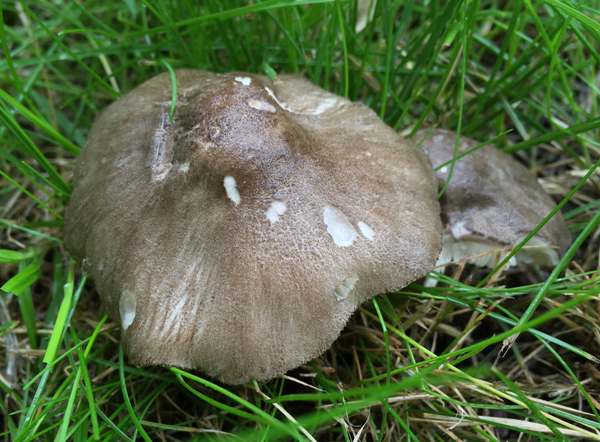
Taxonomic history
Originally described in 1818 by Elias Magnus Fries, who named it Agaricus ephebeus (at a time when most gilled fungi were initially placed in one gigantic Agaricus genus, since largely dispersed across many new genera), this shield mushroom gained its currently-accepted scientific name from an 1878 publication by the French mycologist Claude-Casimir Gillet (1806 - 1896).
Synonyms of Pluteus ephebeus include Agaricus ephebeus Fr., Pluteus lepiotoides A. Pearson, Pluteus murinus Bres., and Pluteus pearsonii P.D. Orton.
Etymology
Pluteus, the genus name, comes from Latin and literally means a protective fence or screen - a shield for example! The specific epithet ephebeus comes from the Greek éphebos and means pubescent or downy - a reference to the tomentose surface texture of the cap of this mushroom.
Identification guide
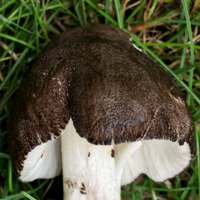 |
Cap4-10cm across, campanulate then broadly convex or flattening, usually with a low central umbo; surface grey-brown to dark brown, finely hairy or downy (tomentose) and radially fibrillose, often splitting to show white flesh beneath the cuticle. |
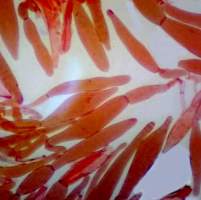 |
PileipellisThe pilleipellis is a cutis with erect septate hyphae having fusiform (somewhat centrally swollen or spindle shaped) terminal cells (shown here); clamp connections absent. |
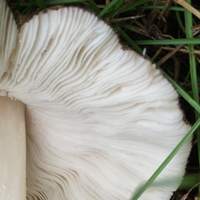 |
GillsWhite or pale grey at first, becoming pale pink or brownish pink but with paler edges; moderately crowded and free. StemThe stipe or stem of this mushroom is white, usually with silvery white longitudinal fibrils; 4-10cm long and of 3-8mm diameter, even or tapering slightly towards the apex; base abruptly bulbous. The upper and middle stem flesh is firm and white becoming pale grey towards the base. |
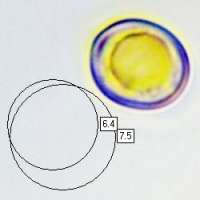 |
SporesSubglobose to ellipsoidal, smooth, 5.5-8.5 x 4.5-6.5µm. Spore printPink. |
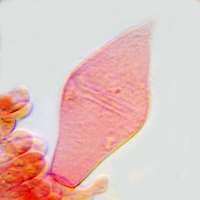 |
PleurocystidiaCystidia on the gill faces project well beyond the basidia. Unlike in Pluteus cervinus they are not ornamented with 'horns' but they are very variable in size and shape - especially so between collections, suggesting that this may be a complex of related species. Often the pleurocystidia, typically 40 to 80µm tall, are fusiform or utriform but occasionally they are narrow and subcapitate. |
Odour/taste |
Odour not distinctive; taste initially mild but later becoming unpleasant and very strongly astringent. |
Habitat & Ecological role |
Saprobic, solitary or in small groups on soil in broadleaf woodlands and in parkland; also on woodchip and damp sawdust heaps; thought to favour clay or calcareous soils. |
Season |
In Britain and Ireland the Sooty Shield fruits during late summer and autumn. |
Similar species |
Pluteus umbrosus has a wrinkled (not tomentose) cap and is usually smaller. |
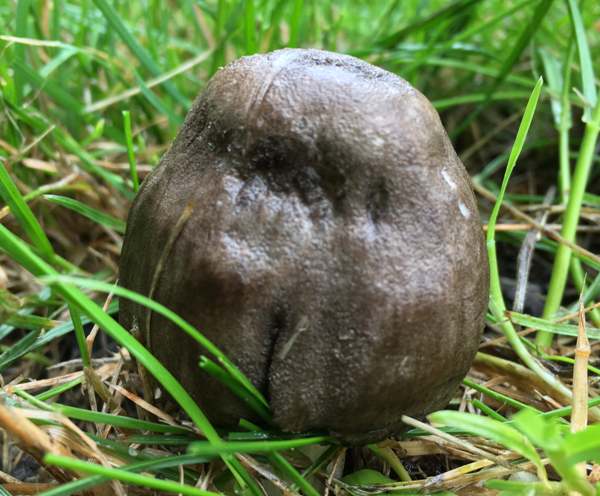
Culinary Notes
The Sooty Shield is reported to be inedible, and there are some concerns that it may contain psilobin/psilocybin. This mushroom should not, therefore, be gathered for eating.
Reference Sources
Fascinated by Fungi, 2nd Edition, Pat O'Reilly 2016, reprinted by Coch-y-bonddu Books in 2022.
Alfredo Justo, Andrew M. Minnis, Stefano Ghignone, Nelson Menolli Jr., Marina Capelari, Olivia Rodríguez, Ekaterina Malysheva, Marco Contu, Alfredo Vizzini (2011). 'Species recognition in Pluteus and Volvopluteus (Pluteaceae, Agaricales): morphology, geography and phylogeny'. Mycological Progress 10 (4): 453–479.
Orton, P.D. (1986). British Fungus Flora: Agarics and Boleti. Vol 4. Pluteaceae: Pluteus & Volvariella. Royal Botanic Garden: Edinburgh, Scotland.
Funga Nordica: 2nd edition 2012. Edited by Knudsen, H. & Vesterholt, J. ISBN 9788798396130
BMS List of English Names for Fungi
Dictionary of the Fungi; Paul M. Kirk, Paul F. Cannon, David W. Minter and J. A. Stalpers; CABI, 2008
Taxonomic history and synonym information on these pages is drawn from many sources but in particular from the British Mycological Society's GB Checklist of Fungi.
Acknowledgements
This page includes pictures kindly contributed by Simon Harding.
Fascinated by Fungi. Back by popular demand, Pat O'Reilly's best-selling 450-page hardback book is available now. The latest second edition was republished with a sparkling new cover design in September 2022 by Coch-y-Bonddu Books. Full details and copies are available from the publisher's online bookshop...
